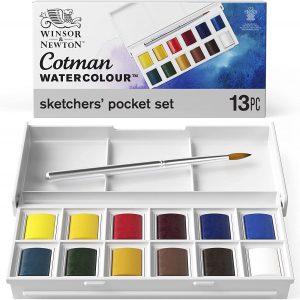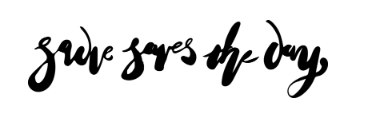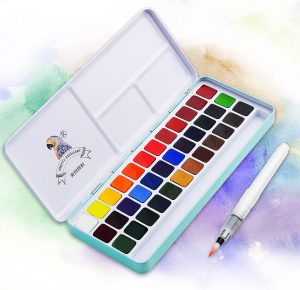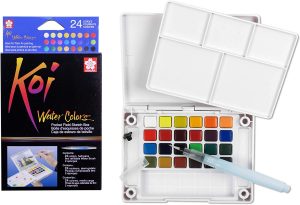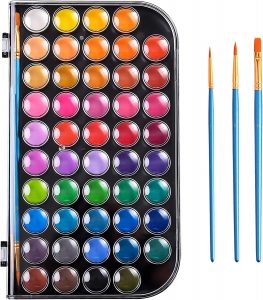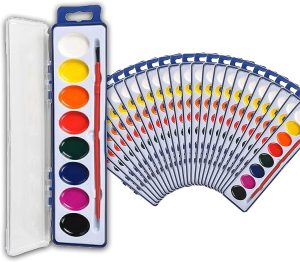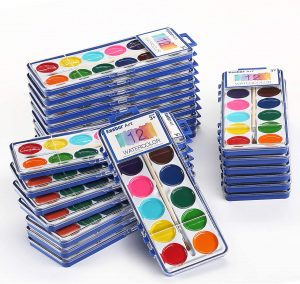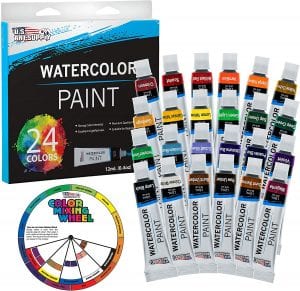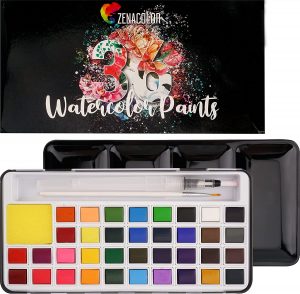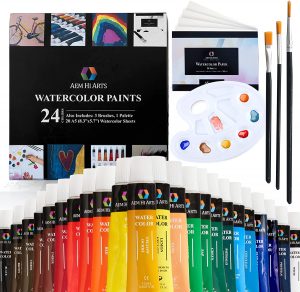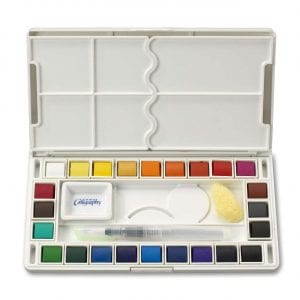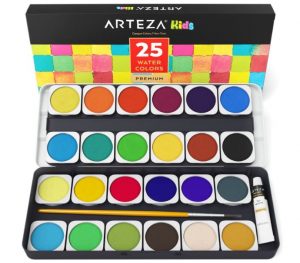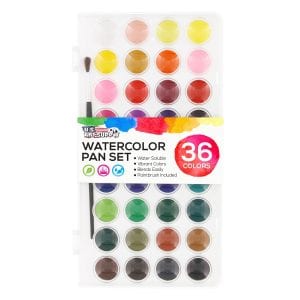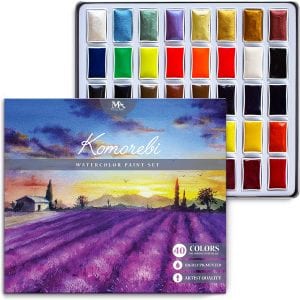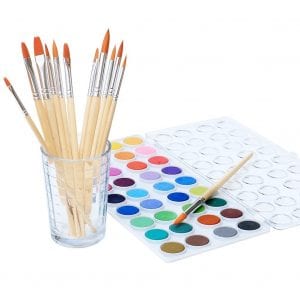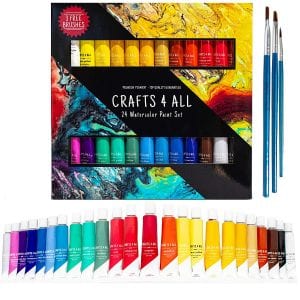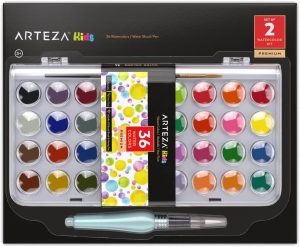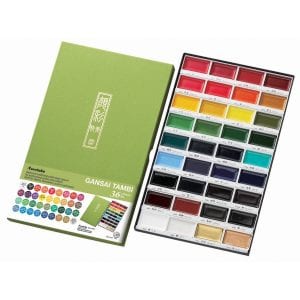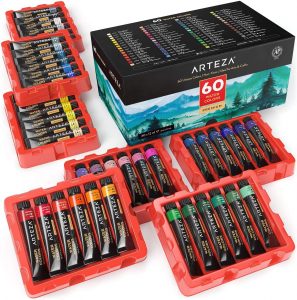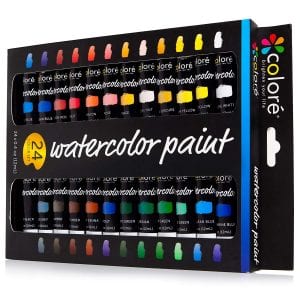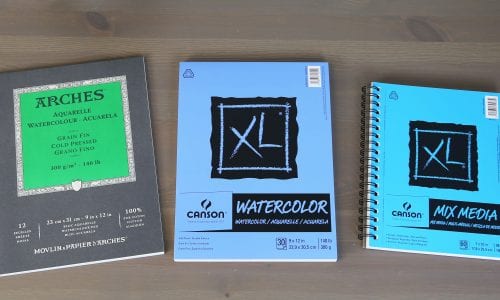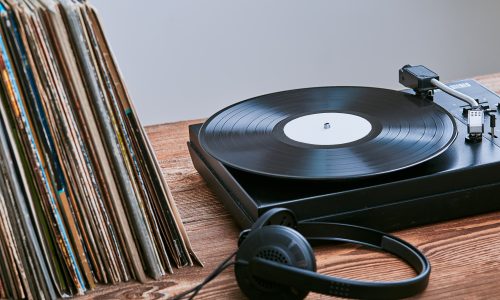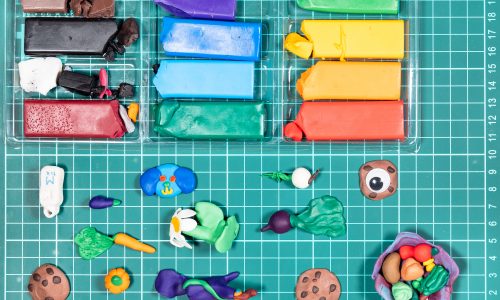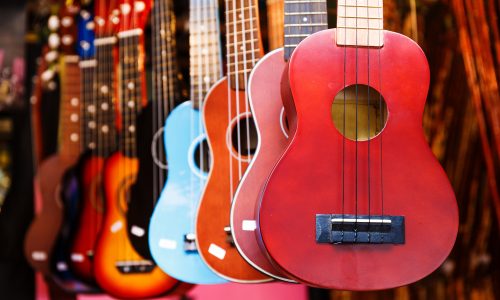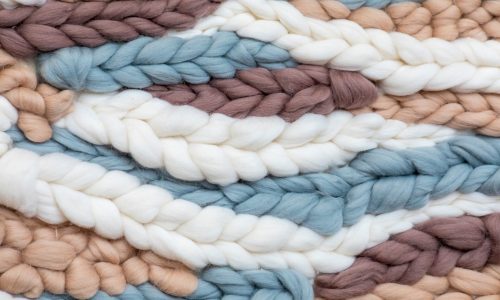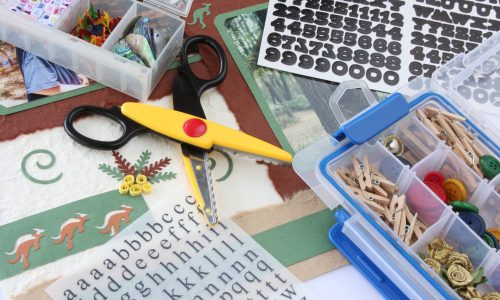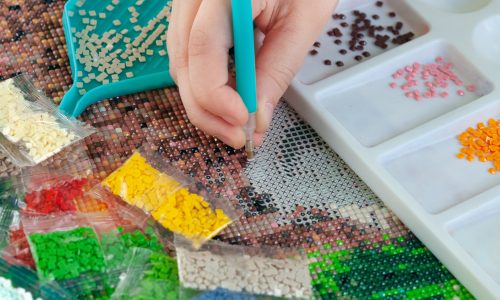The Best Watercolor Paint
We looked at the top 19 Watercolor Paint and dug through the reviews from 27 of the most popular review sites including and more. The result is a ranking of the best Watercolor Paint.

Our Review Process
Don't Waste Your Money is focused on helping you make the best purchasing decision. Our team of experts spends hundreds of hours analyzing, testing, and researching products so you don't have to. Learn more.
Our Picks For The Top Watercolor Paint
- 1. Winsor & Newton Cotman Pocket-Sized Watercolor Paints, 14-Count
- 2. Lightwish MeiLiang Children’s Watercolor Paints, 36-Count
- 3. Sakura Pocket Koi Brush Watercolor Paint Set, 24-Count
- 4. Masllutn Easy Carry Quick-Dry Watercolor Paints, 48-Count
- 5. Neliblu Non-Toxic Student Watercolor Paints, 24-Count
- 6. Keebor Child-Safe Bulk Watercolor Paints, 24-Count
- 7. U.S. Art Supply Acid-Free Watercolor Paints, 24-Count
- 8. Zenacolor Blending Watercolor Paints, 36-Count
- 9. AEM Hi Arts Portable & Washable Watercolor Paints, 24-Count
- 10. Jerry Q Art Lightweight Watercolor Paints, 24-Count
- 11. ARTEZA Starter Watercolor Paint Palette, 25-Count
- 12. U.S. Art Supply Non-Toxic Rainbow Watercolor Paints, 36-Count
- 13. MozArt Supplies Komorebi Japanese Watercolor Paint Set, 40-Count
- 14. kedudes Creativity Watercolor Paints, 36-Count
- 15. Crafts 4 All Premium Pigment Watercolor Paints, 24-Count
- 16. Arteza Easy Clean Watercolor Paints, 36-Count
- 17. Kuretake Gansai Tambi Traditional Watercolor Paints, 36-Count
- 18. Arteza Premium Water Colors, 60-Count
- 19. Colore Professional Watercolor Paints, 24-Count
This pocket-size watercolor paint set is perfect for taking your art on the go. Use the set at the park to paint the ducks in the pond or take it to a friend's house to create memorable portrait. The set includes 12 unique colors, a brush and a built-in tray.
Affordably PricedThe budget-friendly price tag on this watercolor paint set makes it a perfect option for gift giving.
Although this watercolor paint set resembles the cheap watercolors you had as a kid, they are actually made using arabic gum, which increases the gloss and transparency of the paints. The colors are certified non-toxic and mix together beautifully. There's even a metal case with an easy-open lid to keep your paints organized.
Bonus Watercolor BrushNot only do these watercolor paints have a high pigment quality, they also dry without the typical chalky feel.
Although this watercolor paint set is pocket-size, it comes with 24 different colors. The colors can be used as-is or blended together to create new shades. The included koi water brush means you don't need to set up a separate bowl of water to get started.
Travel-Friendly OptionYou won't have any trouble fitting this small watercolor paint set in your backpack or art bag.
Beginners just getting started will find this watercolor paint set the perfect tool. It includes a total of 48 colors and comes with a total of three paintbrushes. Even more exciting is that the cover detaches to double as a handy mixing tray.
Mixing Palette IncludedKids, teens and adults will love the vibrant and non-toxic watercolor paints in this set.
Buying Guide
Painting with watercolors is an artistic endeavor commonly experienced by novice painters or children, due to the non-toxic nature of the paint, ease of cleanup and affordable cost. But the elementary idea of watercolor painting doesn’t accurately depict what these paints can do in the hands of artists who use more highly pigmented watercolor paints.
“All watercolor paint is non-toxic and easy to clean up, which makes it a great choice for a beginning painter,” says our resident arts and crafts expert Amy Markham, an artist and middle school art teacher. “Yet, it has so many possibilities that any artist can develop a lifelong love affair with the medium.”
She went on to add, “You can create with watercolor pencils, sticks, pan blocks and paint from the tube. The most common versions are the pans of watercolor paints that are awakened when touched with water or watercolors from the tube.”
Products that use hardened cakes of paint in a plastic tray or pan are still a great way for more experienced artists to take highly pigmented colors of paints with them when they wish to paint outdoors or on small canvases. A product like Lightwish MeiLiang Pocket Box Watercolor Paint might look similar to the cheaper versions that elementary students use, but these paints are packed with much higher pigmentation. This allows the paint to show up on your canvas with richer colors that don’t look watered down.
MORE: Best Watercolor Paper
Tube paints are also a very common watercolor paint style. In this case, the paint is stored as a liquid in a small tube.
“Tube paints are better for larger works and more for artists who work in a studio-like setting,” says Markham. “Rewetting tube paint is different than pan paints that are made for that. Using tube paints that have dried on the palette is possible, but it is hard on your brush and will often give you a duller version of the color.”
Markham recommends sticking to pan sets if you’re a novice.
“If you are a beginner, I would suggest a pan set because it is more economical and will give you a chance to experiment,” she said. “And, you can use them together. You can mix pan paints and tube paints as you build your practice with these materials.
A good set of tube paint offers a good range of colors that come with a medium level of pigmentation. Markham, the creator of Starling, a podcast dedicated to helping artists develop depth in their creative practice, broke down the difference between the levels of pigmentation.
“The highest quality will be considered an artist-level and the next step down would be a student-level. But not like the Crayola paints from your school days. When you see student-level, think more of an art-school student level,” she said. “They are meant for someone who is learning to use the medium and getting the best out of it at a lower, entry-level price while they explore the properties of the paint.”
The student-level tier level of paint is where most people will find the best value for their needs. A typical painter who is trying to express their artistic side through a relaxing practice will want to begin working with a set of watercolor paints. Some sets include a color mixing wheel as an added bonus, but the paints themselves are easy to work with and will show up on paper with the hue and vibrancy you need to really achieve the color that you hope to.
The biggest difference when stepping up to the artist-level paints boils down to a couple of factors: pigmentation in the paint and the ability to last the test of time after being painted, meaning it will still look good as a piece of art long after it is finished.
“The better quality versions have a higher concentration of pigment and would be considered artist-level. An artist-level watercolor will have a higher intensity of color, which gives it the ability to create a better range of value in washes. It also is more archival and often has a better lightfastness rating,” Markham said. “Lightfastness refers to how the paint responds with exposure to light and humidity. On tubes of watercolors, many artist level paints will have a rating on the side for lightfastness and you want a very good or excellent rating here if you are investing in artist level paints.”
Lightfastness ratings are a great way to narrow down which paints will be the higher level for artists, as the paints with higher lightfastness will also generally have richer pigments that an artist would find ideal to use in their work. A set of tube paint typically comes at a slightly higher price point than some of the other common watercolor paints, due to its lightfastness rating.
As Markham points out, finding truly rich pigmentation in paints is not always easy and not usually cheap for the companies making the products.
“Many student-level watercolors will be synthetics. Some of the true pigments are more expensive because they are harder to find, rare or even scarce,” she says. “So many companies will use a synthetic pigment to keep costs low. This is a great alternative, but know that it means the color may not be as vibrant as a true pigment and it may mix a little differently as well.”
Our Expert Consultant

Artist and art educator
Artist and educator Amy Markham is the creator of Starling, a podcast dedicated to helping artists develop depth in their creative practice. A graduate of Virginia Commonwealth University, Amy has been an art educator since 2001. Today, she teaches middle school art at a school outside of Memphis, Tennessee. Her personal artwork explores myth-making and symbolic understandings. Through her brand, Starling Creative Living, she leads others to explore art production as a method for enriching their life experience.
Why we recommend these watercolor paint?
Products Considered
Products Analyzed
Expert Reviews Included
User Opinions Analyzed
Our experts reviewed the top 19 Watercolor Paint and also dug through the reviews from 27 of the most popular review sites including and more. The result is a ranking of the best of the best Watercolor Paint.
DWYM is your trusted roduct review source. Our team reviews thousands of product reviews from the trusted top experts and combines them into one easy-to-understand score. Learn more.
The Best Bang For Your Buck
Masllutn Easy Carry Quick-Dry Watercolor Paints, 48-Count
Key Takeawy
Beginners just getting started will find this watercolor paint set the perfect tool. It includes a total of 48 colors and comes with a total of three paintbrushes. Even more exciting is that the cover detaches to double as a handy mixing tray.
What to Look For
- Creating art through the use of watercolor paints is fun, challenging, easy to try and highly rewarding in many ways. “Many people find the fluidity and transparency of watercolor to be challenging,” says Markham, “But that is also what makes it such a versatile and amazing medium for expression. It asks us to loosen up, be free and allow the flow in our process.”
- If you’re only just starting out, make sure you’re using the appropriate materials. “As you are beginning to explore watercolor painting my suggestion would be to start with student-level products and then once you have a feel for the process move into artist-level,” Markham suggests. “You can mix these products without fear. And as you build your paint collection you may find you like one color from one company and another color better from a different brand. So it is all about personal experimentation.”
- As you do inevitably begin building your paint collection, it can help to keep notes or a journal on particular products that you really enjoyed or didn’t like as well. It’s much easier to remember these things when you have them written down, as you might find yourself looking back after a while and forgetting how each color made you feel.
- Another handy tip from Markham: Rewetting tube paint is not the same as rewetting pan paints. The tube paints begin as a liquid and, when rewetted, are going to show up duller than when they were fresh out of the tube. Rewetting is also not very friendly to your brush. Keep this in mind so you can avoid the frustration of finding this out firsthand.
- Watercolor painting is an easy way to get started in the world of art for anyone at any level of skill. “The most important part of learning any medium or developing any creative practice is just to get started,” says Markham. “So, get some paints and see what happens. And, as always enjoy your process.”
More to Explore
Before the era in which commercial watercolor paints became available in the mid-18th century, painters had to create their own pigments at an apothecary. They would then take them to a “colorman,” who would bind them with some product like gum arabic. This created a small block of pigmented resin that required laborious rubbing to produce any level of usable paint.

